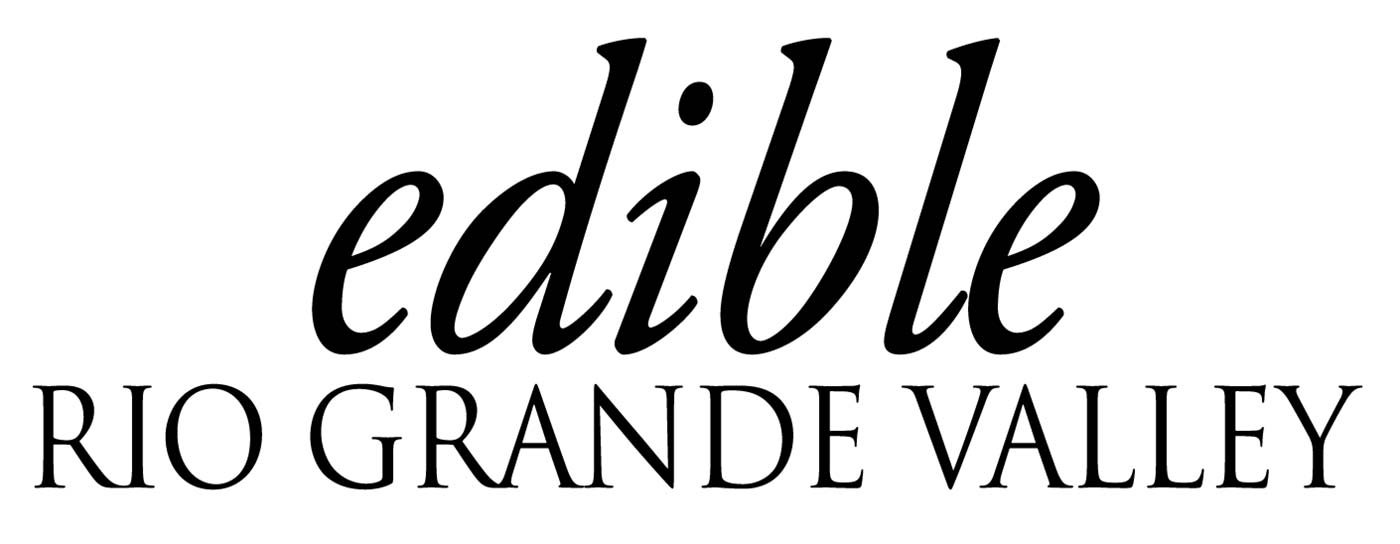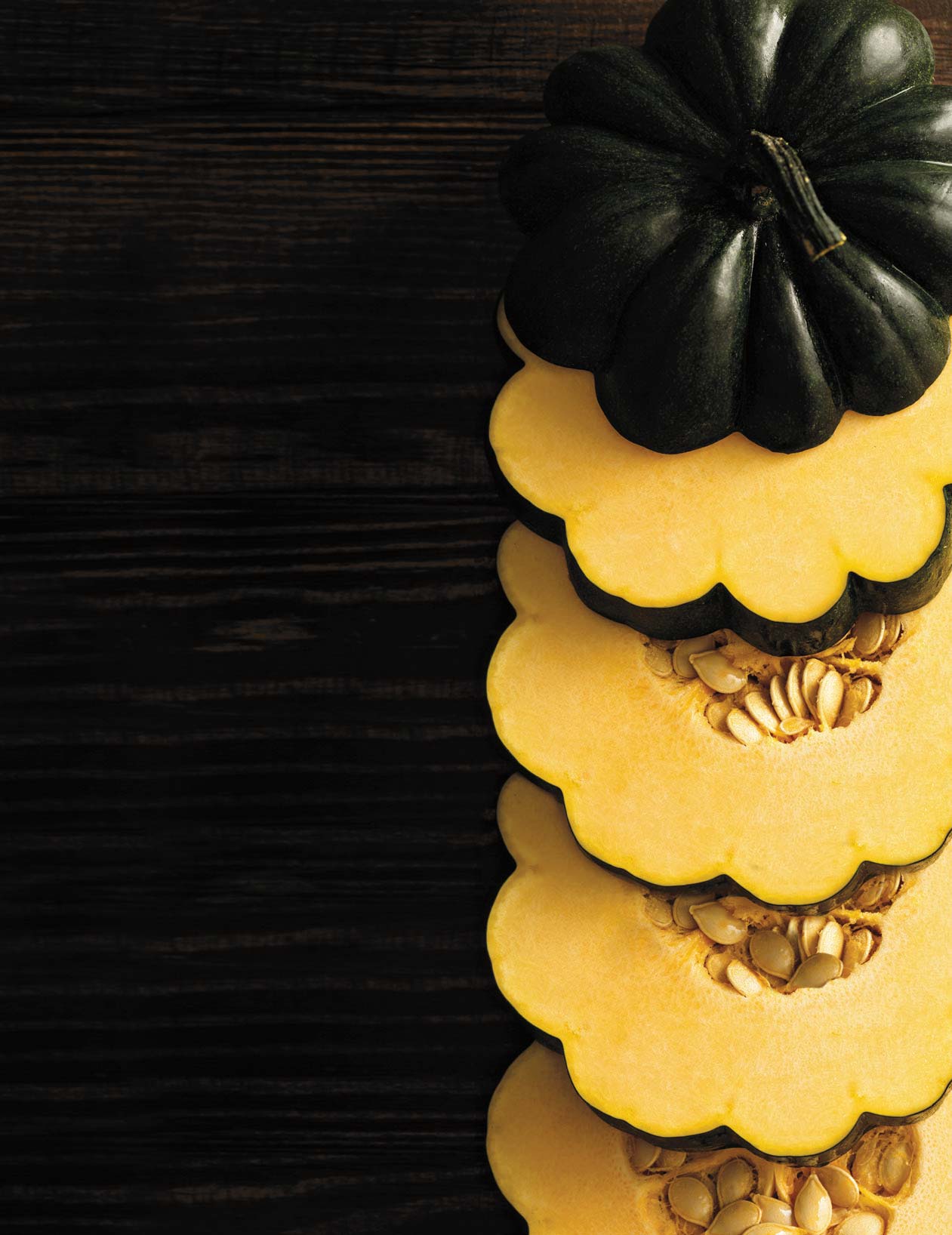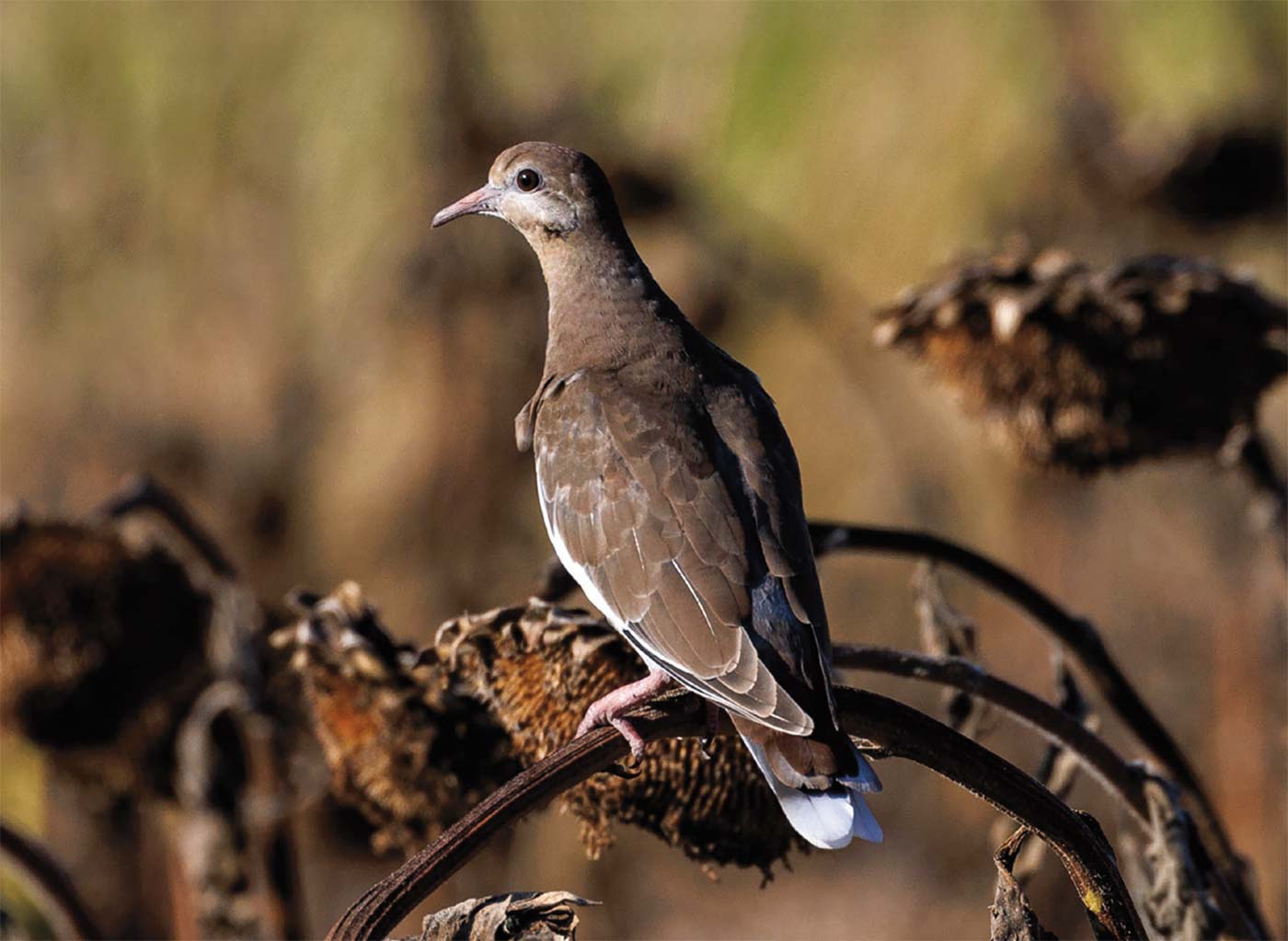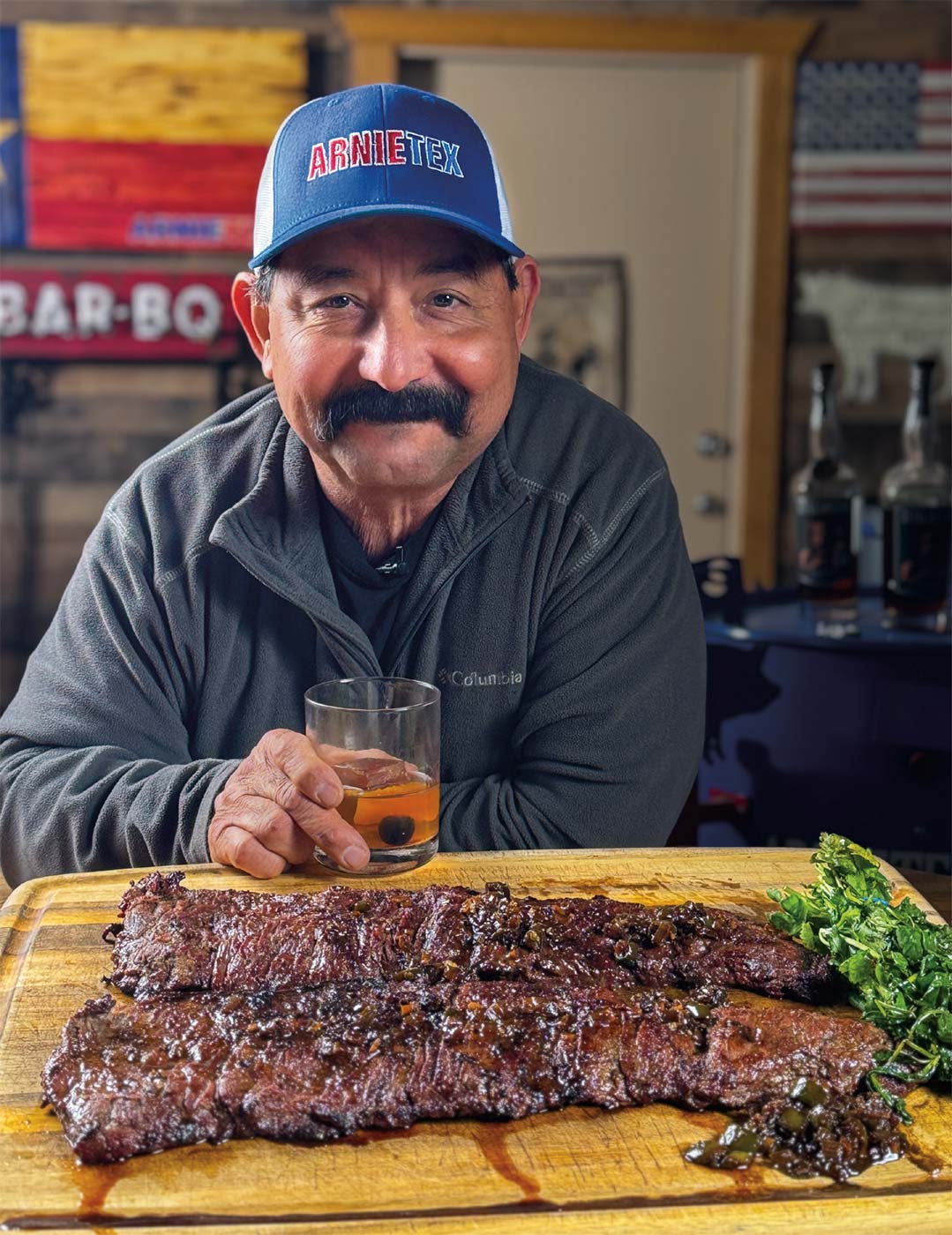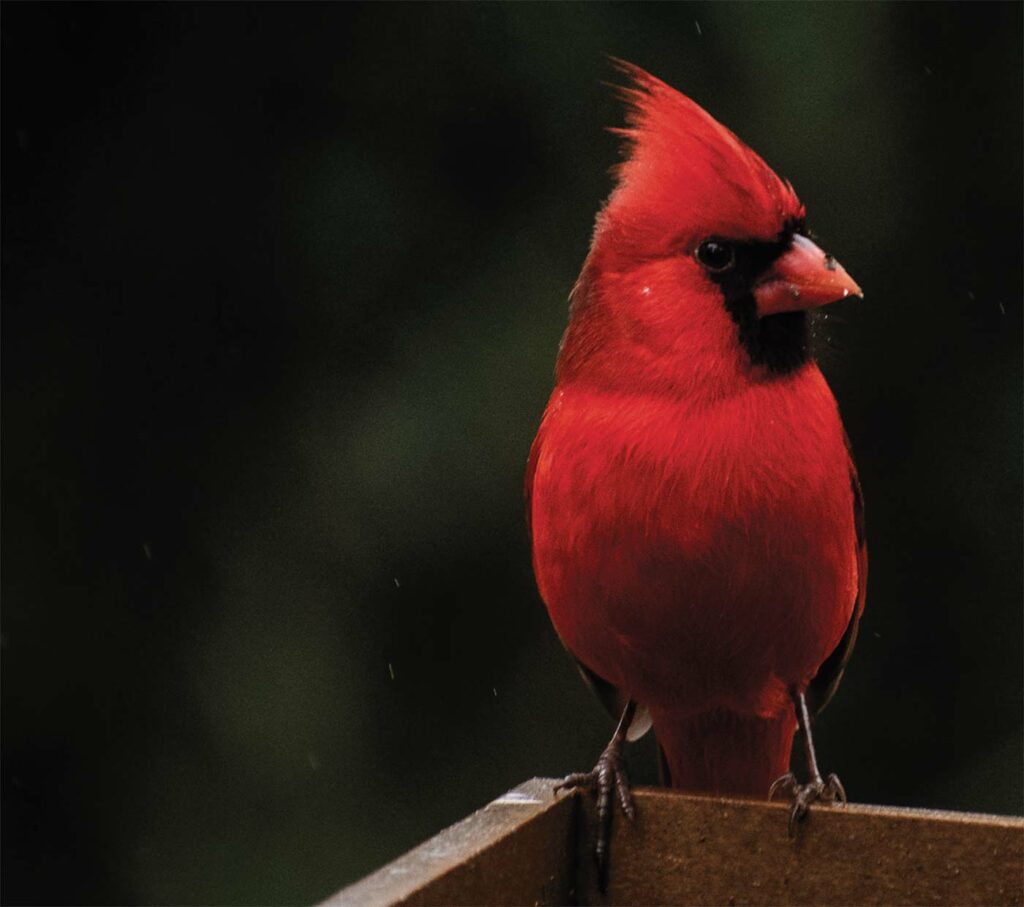
PHOTOS BY SELENE SHORES AND HORACIO MARTINEZ
Putting out food and water for the Rio Grande Valley’s spectacular bird life is always a win-win but especially during migration periods. The Valley is deeply important for birds and bird lovers. In fact, birders from all over the world travel to glimpse our birds, many of which Valley residents enjoy from the comfort of our own backyards. Why? Our location is key, along a migratory corridor where two major bird flyways converge. Plus, we are next to the Gulf of Mexico and relatively near the Tropics.
As a result, about 50% of all the bird species in the U.S. can be found right here at some point in the year. And some can only be found in the Valley’s subtropical habitats, like the Altamira oriole and plain chachalaca, while the green jay’s northern range ends in deep South Texas.
FALL IS A SPECIAL TIME
Our bird watching is exceptional year-round but fall migration (roughly August through mid-November) is when millions upon millions of birds will be flying into, out of, or through the Valley. They will be looking for extra energy and nutrients to help them complete or recover from their journeys. During migration, your backyard bird feeding can make a real difference.
Pro Tip: Use the BirdCast Migration Dashboard at dashboard.birdcast.info to see photos of each day’s most common species in the area, so you know what to look for.
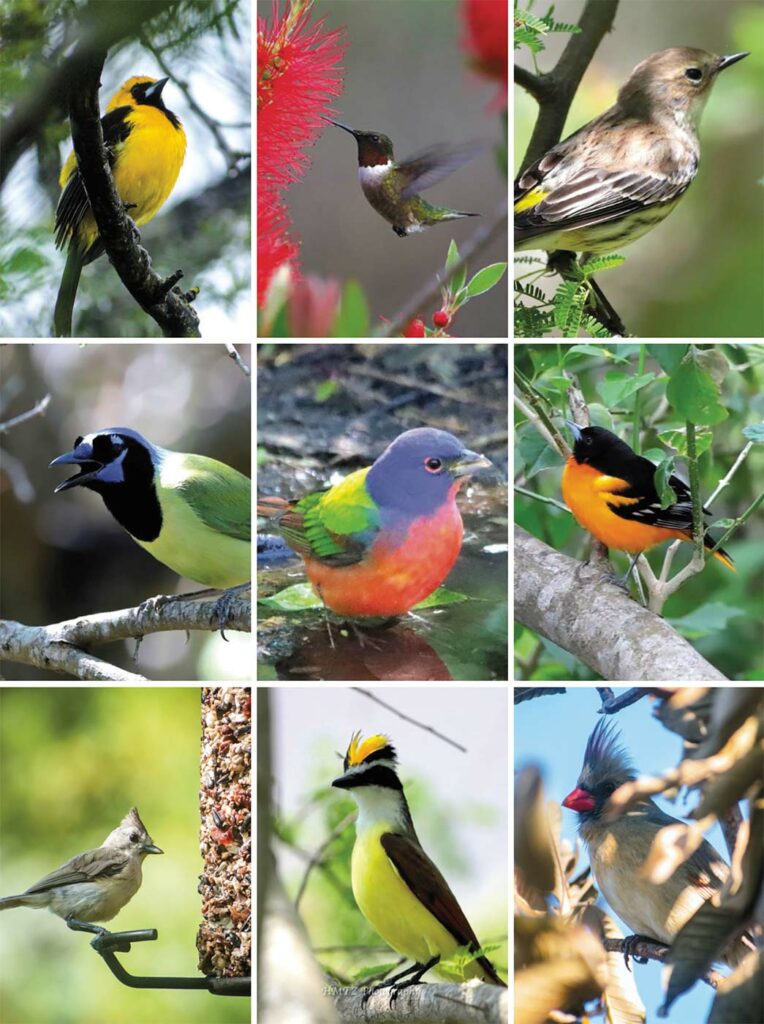
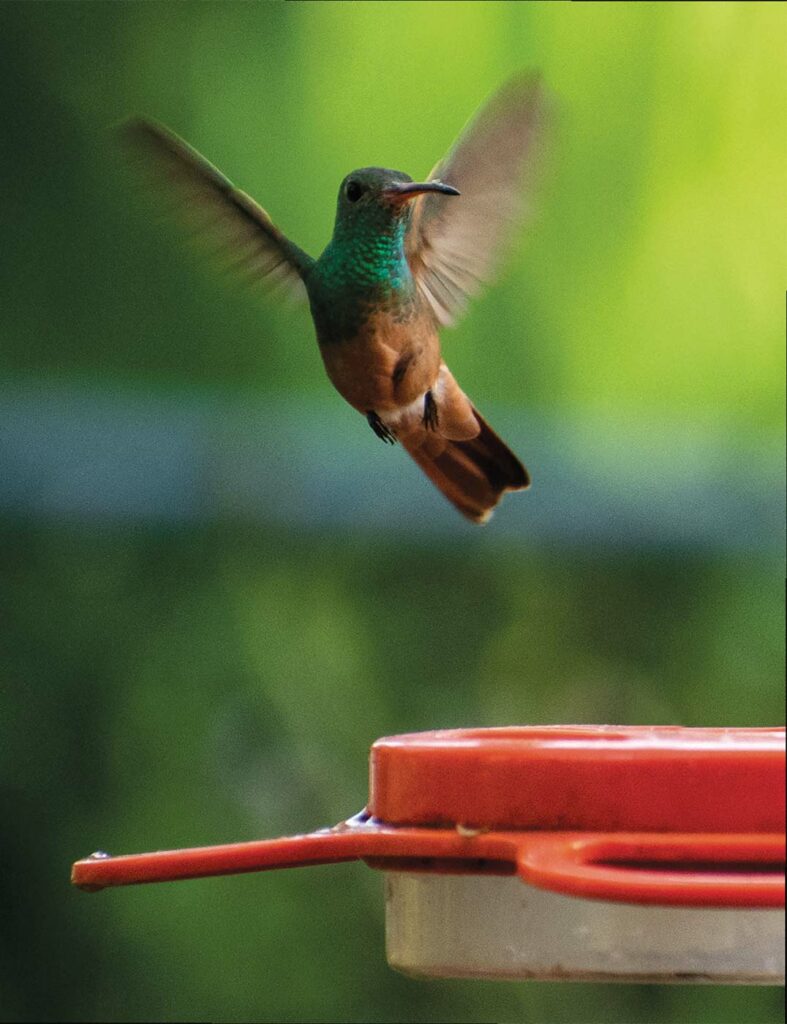
BIRDS ARE GOOD FOR US
- Mental health: Research shows birdsong reduces anxiety and irrational thoughts, and that seeing or hearing birds can boost well-being for up to eight hours.
- Plants and crops: Many bird species spread seeds in their droppings, and some even pollinate flowering plants.
- Pest control: Many birds eat various species of insects, and some even eat mosquitoes.
- The economy: Wildlife-watching Americans, the majority being bird watchers, spend billions on their trips.
YOU CAN HELP
Did you know the Valley Land Fund estimates that “less than 5% of the original native habitat remains” here? You can help turn that around. Here’s how:
Dial Up Your Bird Curb Appeal
You do not need a large yard or even a lot of money to make your home — or workplace — an inviting stopover for birds.
Small Budget
- Stick half an orange on a tree branch to feed orioles, or smear peanut butter on tree bark for woodpeckers.
- Find instructions online from the Texas Parks & Wildlife Department or other reputable sources to make feeders from old milk jugs, jars or spare wood.
Small Spaces
- Some hummingbird and seed feeders can stick to a window or glass door with suction cups.
- Hang a feeder from a wall, post, deck or balcony using a bracket or hanger arm with a hook.
- Choose a suet feeder if you want to avoid spilled seed.
Going Bigger
If you can, create one or more bird-feeding stations. Add a water source, such as a birdbath or water feature, to help mitigate our scorching summer heat. Then visit local nurseries that specialize in native plants because many birds and insect pollinators rely on native plants, trees and shrubs. Also, natives are typically easier to maintain — another win-win.
CREATING A BIRD FEEDER
Find these items at specialty wild bird feeding stores, feed stores, hardware stores and the like.
The Basics
Your main feeder: Look for a hopper or a tube feeder that fits several birds at once, holds enough seed for two to three days, is easy to fill and clean and is durable. Shepherd’s hook: Use a tall, sturdy shepherd’s hook to hang your feeder in a spot you can see and access easily, with 10 feet of clearance all around to prevent window strikes and deter squirrels and cats.
Birds prefer having trees/shrubs or a fence nearby for cover or perching. (You can also place a feeder within 3 feet of a window, where birds generally won’t pick up enough speed to get hurt.)
All-purpose bird food: A blend of sunflower, safflower and peanuts will attract a variety of birds.
Birdbath or fountain: Water helps sustain and attract birds, especially if it is moving (which also prevents mosquitoes).
Next Level
Tray/platform feeders: These are fun for watching birds going for special foods like peanuts or mealworms.
Suet feeders: These cages hold blocks or balls of high energy that give migrating birds a needed boost, but also attract birds year-round.
Hummingbird feeders: Choose one with red accents and that’s built to deter insects. Specialty feeders and feed: These can help attract — or deter — certain birds. For example, weight-sensitive feeders close off to pigeons and squirrels. Finch feeders are designed to hold the tiny Nyjer seeds they love Squirrel baffles: These prevent squirrels from climbing up a pole or
leaping onto a feeder.
Pro Tip: Read Seed Ingredients — Avoid Fillers
Stay away from bargain seed blends, which often use milo (sorghum), red millet, flax and wheat to fill up the bag. Birds generally kick that stuff to the ground, which leaves a mess, attracts rodents and wastes your money. If the seed is moldy, do not buy or use it.
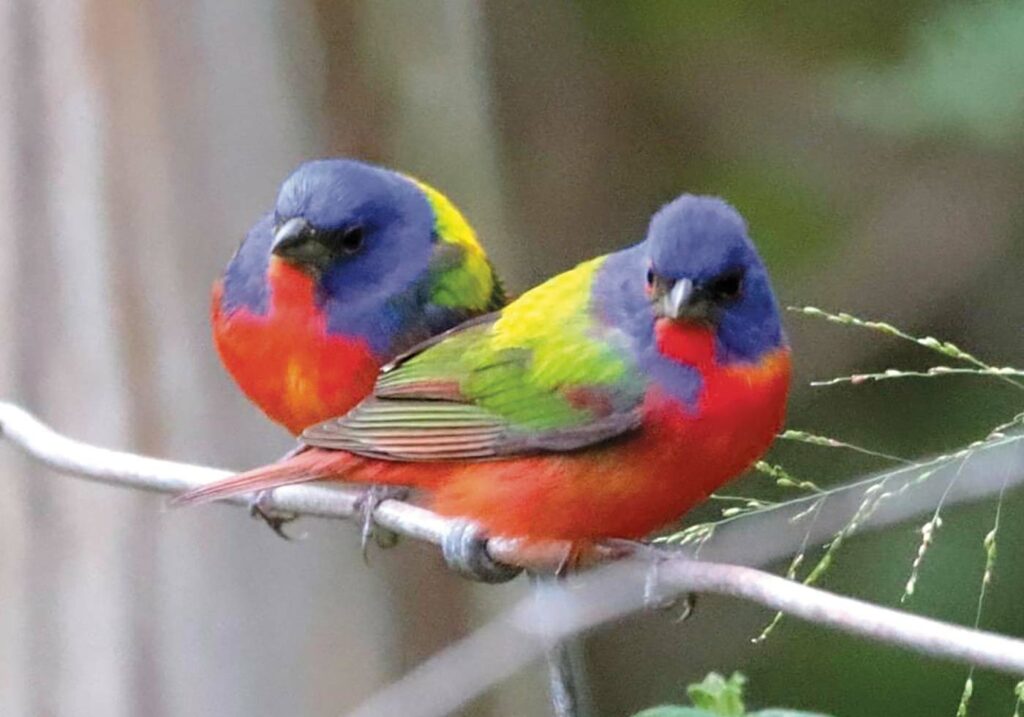
DIY HUMMINGBIRD NECTAR
Simply dissolve 1 part white table sugar into 4 parts hot water. Cool before using, then refrigerate the rest. Discard after a week or so. Replace the nectar in your feeders every couple of days to prevent bacteria and mold. Don’t add red dye (natural nectar is clear) or extra sugar, and don’t use honey, raw sugar or sugar substitutes. During fall migration, your feeders may attract ruby-throated hummingbirds, rufous hummingbirds, black-chinned hummingbirds or even rarer species.
MORE WAYS TO HELP VALLEY BIRDS
- Turn off or dim outside lights to avoid confusing birds, most of which migrate at night.
- Wait until spring to cut back plants. These can provide perches or cover for birds, while seed heads can be food sources.
- Clean feeders and change birdbath water regularly to prevent disease.
- Learn how to prevent bird strikes on your windows.
- Keep your cat indoors as much as possible, and consider attaching a small bell or cat bib to its collar.
Don’t miss out on the Valley’s spectacular fall bird migration this year. With a few simple steps, you can help support our amazing bird life and bring more color and joy to your backyard.
BIRDING HOTSPOTS AROUND THE RGV
Bentsen-Rio Grande Valley State Park* (Mission)
City of Brownsville Landfill (Brownsville)
Edinburg Scenic Wetlands* (Edinburg)
Estero Llano Grande State Park* (Weslaco)
Frontera Audubon Society Nature Preserve (Weslaco)
Harlingen Arroyo Colorado* (Harlingen)
Hugh Ramsey Nature Park (Harlingen)
Laguna Atascosa National Wildlife Refuge (Los Fresnos)
La Sal del Rey (Edinburg)
McAllen Nature Center (McAllen)
National Butterfly Center (Mission)
Old Hidalgo Pumphouse Museum* (Hidalgo)
Quinta Mazatlan* (McAllen)
Resaca de la Palma State Park* (Brownsville)
Roma Bluffs* (Roma)
Sabal Palm Sanctuary (Brownsville)
Salineño Project** (Salineño)
Santa Ana National Wildlife Refuge (Alamo)
South Padre Island Birding and Nature Center* (South Padre Island)
South Padre Island Migratory Bird Sanctuary** (South Padre Island)
South Texas Ecotourism Center (Laguna Vista)
Valley Nature Center (Weslaco)
*Part of the World Birding Center, a network of nine parks and nature preserves
** Part of Valley Land Fund’s conservation efforts
